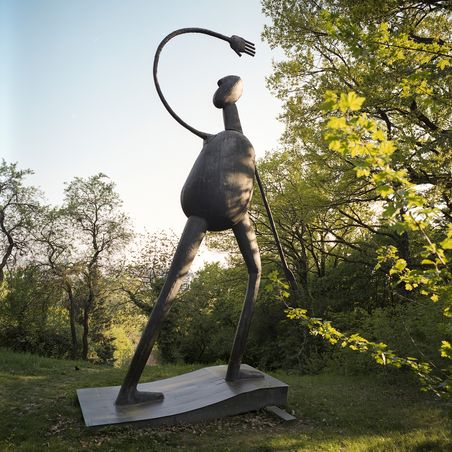Wanderer Man, He Sees the Bright Light
1983 | Cat. No. 227 | Welded bronze plates | Height 705 cm
Inscription on the base:
WANDERER / HE SEES THE BRIGHT LIGHT

The Wanderer is the largest and the last work that Kirchner created. The widely spread legs indicate the figure’s dynamic movement. But the Wanderer’s stride is interrupted by a moment of pause, with his head pointing in the opposite direction up at the sky. “He sees the bright light”, as the inscription on the base states. He has his right arm raised above his head, the round shape of which suggests a halo and marks the Wanderer as enlightened. At the same time, this gesture is to be interpreted as an invitation to mankind to follow the figure.
The wanderer is a recurring motif in Kirchner’s work. For the artist, it represents the journey through life: From birth onwards, mankind passes through the various phases of life, from childhood to youth to adulthood. According to this understanding, even death does not represent an end, but rather the beginning of a further journey, symbolised by the infinite metamorphosis of nature. This idea of transformation is also continued in the egg-shaped torso of the Wanderer – A symbol that in Christian iconography refers to the resurrection and is transferred by Kirchner into a humanistic, worldly context.
Audio guide
Location of the sculpture
